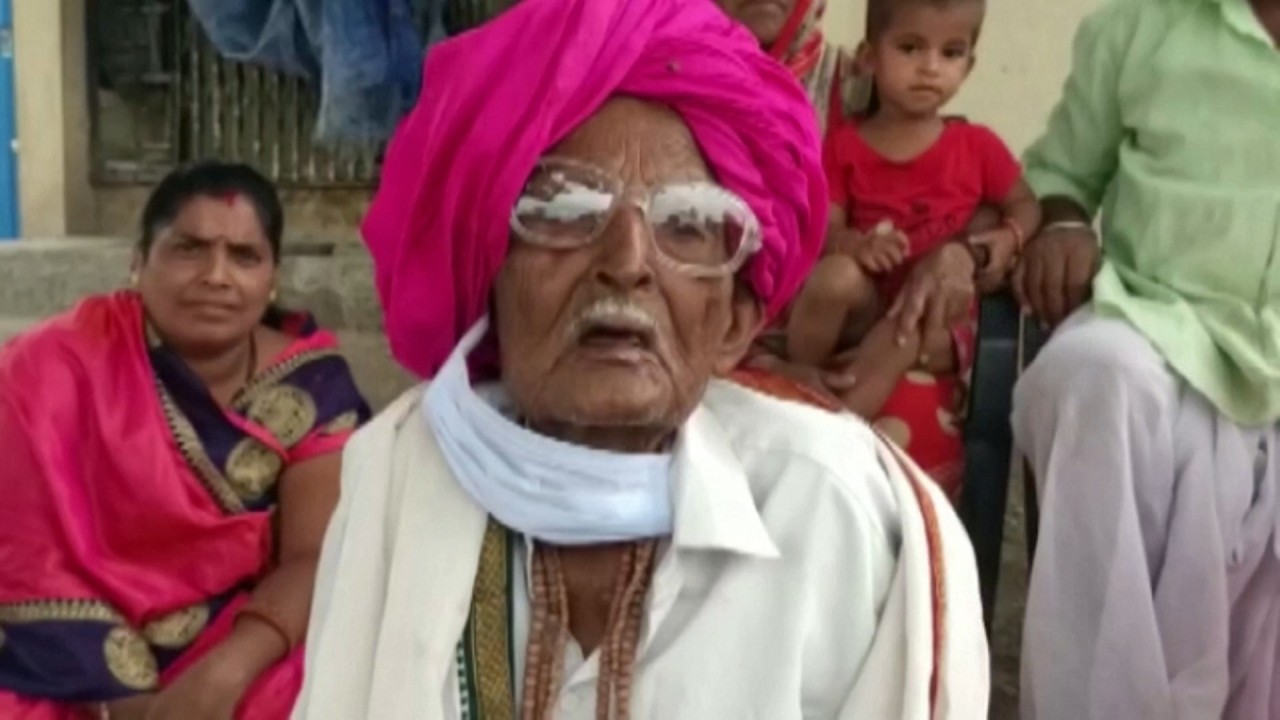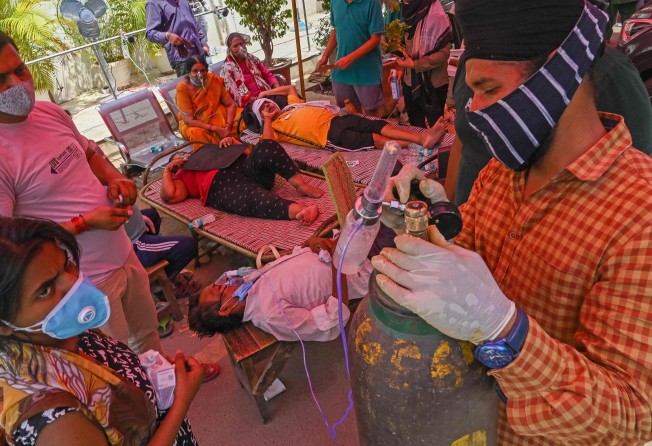
01:37
105-year-old Indian man and 95-year-old wife beat Covid-19

The speed at which a second wave of Covid-19 has overtaken India has raised global concerns about a new virus variant circulating in the country.
India – now the pandemic’s epicentre – set a global record on Thursday with 375,000 cases, and its hospitals and crematoriums have been stretched to breaking point.
The crisis emerged swiftly in recent weeks even after India’s health minister said last month that the country was in the “end game” of its battle with the disease. Scientists are trying to understand what is driving the surge and how much it has to do with a variant of the virus that has been dubbed a “double mutant”.
About a dozen mutations distinguish this strain from the original but it won the tag for carrying two worrying mutations seen elsewhere. The strain, known to scientists as B.1.617, was first identified in India in October and has since been found in at least 19 other countries.
Mutations happen naturally as viruses spread, but in recent months some have emerged to make Covid-19 more transmissible or more able to dodge immune defences.
Health experts have said there is not yet enough data to know for certain whether B.1.617 fits this bill and what role it is playing in the latest surge.
Meanwhile other factors like large religious gatherings and political rallies and a relaxation of social distancing measures are thought to have played a role. Less than 2 per cent of India’s people are fully vaccinated, according to Bloomberg.
“We need more research before we fully understand the impact of this particular variant, which would be helped by more extensive sequencing of the strains seen in India,” said Martin Hibberd, a professor of emerging infectious diseases at the London School of Hygiene & Tropical Medicine.
“But we can already get some impression, based on its similarity to other strains seen across the world, that it has some increased transmissibility at least.”
Those similarities found across different versions of the B.1.617 variant include three mutations with worrying track records.
One is similar to a mutation found in variants that emerged in South Africa and Brazil, thought to escape some of the body’s virus-fighting antibodies gained by past infection or vaccination. Another, which has spread in the US state of California, is thought to be more transmissible and have some immune evasion ability. The third may allow the virus to bind to human cells more easily. Not all three mutations are found on all documented samples of the variant.
The World Health Organization said on Tuesday that preliminary models showed the variant was gaining prevalence more quickly than other strains, “suggesting potential increased transmissibility”.
But even if this is the case, social factors also come to bear, according to infectious disease specialist Sanjaya Senanayake, an associate professor at the Australian National University.
“Just because a strain is potentially more infectious doesn’t mean that it is going to cause more Covid-19, you may need other circumstances for that to occur,” such as relaxed disease control measures, he said.
Meanwhile, B.1.617 is not the only variant circulating in India that could be playing a role in the surge in case numbers. A more transmissible strain known as B.1.1.7 that has driven infections in Britain and the United States is also known to be present.
By last month it had become the dominant strain in the northwestern state of Punjab, according to local broadcaster NDTV. So far, B.1.1.7 has been shown to have a minimal impact on people’s immune defences.
With India’s B.1.617 variant, some experts also see early indications the strain may be less susceptible to immune defences built up through natural infection. One clue may be the spike in cases even in India’s urban areas, which some studies showed already had high levels of immunity due to previous infections.
“As the first wave in India was more than six months ago, people who were infected could now be experiencing declining immune responses and greater chance of being reinfected with a virus that is less sensitive to immune responses,” clinical microbiology professor Ravi Gupta of the University of Cambridge said in comments to Britain’s Science Media Centre earlier this week.
But “we don’t know for sure yet” whether the strain had reduced susceptibility to previous infection or vaccination, he said.
Anurag Agrawal, director of the Institute of Genomics and Integrative Biology in New Delhi, said preliminary lab studies of India’s two approved vaccines – Bharat Biotech’s Covaxin and Covishield, developed by AstraZeneca – found they did neutralise the variant.
“This is a positive while we get quantitative data for better understanding of infection protection,” he said on Twitter on Tuesday, adding that the current findings indicated that if people did get sick after being vaccinated they would become less ill.
Senanyake said that while it remained to be seen how worrisome the B.1.617 variant might be, the crisis in India and elsewhere increased the chances of mutations.
“The more [the virus spreads], the more opportunity it has to mutate into something even more immune evasive and more infectious,” he said.